- Clone
- WM15 (See other available formats)
- Regulatory Status
- RUO
- Workshop
- IV M44
- Other Names
- Aminopeptidase N, APN, gp150
- Isotype
- Mouse IgG1, κ
- Ave. Rating
- Submit a Review
- Product Citations
- publications
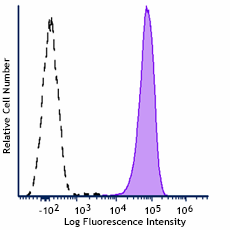
-

Human peripheral blood granulocytes were stained with anti-human CD13 (clone WM15) PE/Fire™ 810 (filled histogram) or unstained control (left).
| Cat # | Size | Price | Quantity Check Availability | Save | ||
|---|---|---|---|---|---|---|
| 301737 | 25 tests | £150 | ||||
CD13 is a 150-170 kD type II transmembrane glycoprotein also known as aminopeptidase N, APN, and gp150. This zinc metallopeptidase is expressed as a homodimer on granulocytes, myeloid progenitors, endothelial cells, epithelial cells and subset of granular lymphoid cells. It is not expressed on platelets or erythrocytes. CD13 is thought to be involved in the metabolism of many regulatory peptides and functions in antigen processing and the cleavage of chemokines such as MIP-1. CD13 serves as the cellular receptor for Coronavirus.
Product DetailsProduct Details
- Verified Reactivity
- Human
- Reported Reactivity
- Baboon, Chimpanzee, Cotton-topped Tamarin
- Antibody Type
- Monoclonal
- Host Species
- Mouse
- Formulation
- Phosphate-buffered solution, pH 7.2, containing 0.09% sodium azide and BSA (origin USA)
- Preparation
- The antibody was purified by affinity chromatography and conjugated with PE/Fire™ 810 under optimal conditions.
- Concentration
- Lot-specific (to obtain lot-specific concentration and expiration, please enter the lot number in our Certificate of Analysis online tool.)
- Storage & Handling
- The antibody solution should be stored undiluted between 2°C and 8°C, and protected from prolonged exposure to light. Do not freeze.
- Application
-
FC - Quality tested
- Recommended Usage
-
Each lot of this antibody is quality control tested by immunofluorescent staining with flow cytometric analysis. For flow cytometric staining, the suggested use of this reagent is 5 µL per million cells in 100 µL staining volume or 5 µL per 100 µL of whole blood. It is recommended that the reagent be titrated for optimal performance for each application.
* PE/Fire™ 810 has a maximum excitation of 488/561 nm and a maximum emission of 810 nm.
Excessive exposure to light, and commonly used fixation, permeabilization buffers can affect PE/Fire™ 810 fluorescence signal intensity and spread. Please keep conjugates protected from light exposure. For more information and representative data, visit our Fire Dyes page. - Excitation Laser
-
Blue Laser (488 nm)
Green Laser (532 nm)/Yellow-Green Laser (561 nm)
- Application Notes
-
Additional reported applications (for the relevant formats) include: inhibition of tumor-cell invasion and blocking of aminopeptidase activities2,3, and immunohistochemical staining of acetone-fixed frozen tissue sections5. WM15 does not recognize formalin-fixed or paraffin-embedded tissue sections5. The LEAF™ purified antibody (Endotoxin < 0.1 EU/µg, Azide-Free, 0.2 µm filtered) is recommended for functional assays (Cat. No. 301708). For highly sensitive assays, we recommend Ultra-LEAF™ purified antibody (Cat. No. 301723 and 301724) with a lower endotoxin limit than standard LEAF™ purified antibodies (Endotoxin < 0.01 EU/µg).
-
Application References
(PubMed link indicates BioLegend citation) -
- Knapp W, et al. 1989. Leucocyte Typing IV. Oxford University Press. New York.
- Saiki I, et al. 1993. Int J Cancer. 54:137. (Block)
- Rosenzwajg M, et al. 2000. Blood 95:453. (Block)
- Kawase M, et al. 2008. J Virol. 83:712. (Block) PubMed
- Di Matteo P, et al. 2011. J. Histochem. Cytochem. 59:47. (IHC)
- RRID
-
AB_2936533 (BioLegend Cat. No. 301737)
Antigen Details
- Structure
- Zinc metallopeptidase, type II integral membrane glycoprotein, 150-170 kD
- Distribution
-
Granulocytes, monocytes, myeloid progenitors, endothelial and epithelial cells, granular lymphocyte subset
- Function
- Zinc-binding metalloproteinase, antigen processing, cleaves MIP-1 chemokine
- Ligand/Receptor
- Coronavirus receptor
- Cell Type
- Endothelial cells, Epithelial cells, Granulocytes, Hematopoietic stem and progenitors, Lymphocytes, Mesenchymal Stem Cells, Monocytes, Neutrophils
- Biology Area
- Immunology, Stem Cells
- Molecular Family
- CD Molecules
- Antigen References
-
1. Shipp M, et al. 1993. Blood 82:1052.
2. Larsen S, et al. 1996. J. Exp. Med. 184:183. - Gene ID
- 290 View all products for this Gene ID
- UniProt
- View information about CD13 on UniProt.org
Related FAQs
Other Formats
View All CD13 Reagents Request Custom ConjugationCustomers Also Purchased
Compare Data Across All Formats
This data display is provided for general comparisons between formats.
Your actual data may vary due to variations in samples, target cells, instruments and their settings, staining conditions, and other factors.
If you need assistance with selecting the best format contact our expert technical support team.
-
APC anti-human CD13
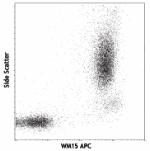
Human peripheral blood lymphocytes, monocytes and granulocyt... -
PE anti-human CD13
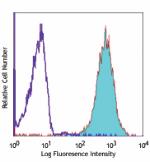
Human peripheral blood granulocytes stained with WM15 PE -
Purified anti-human CD13
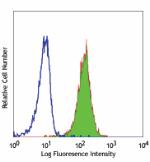
Human peripheral blood granulocytes stained with purified WM... -
Brilliant Violet 421™ anti-human CD13

Human peripheral blood granulocytes were stained with CD13 (... -
APC/Cyanine7 anti-human CD13

Human peripheral blood granulocytes stained with CD13 (clone... -
PE/Cyanine7 anti-human CD13
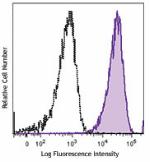
Human peripheral blood granulocytes were stained with CD13 (... -
PerCP/Cyanine5.5 anti-human CD13

Human peripheral blood granulocytes were stained with CD13 (... -
Purified anti-human CD13 (Maxpar® Ready)
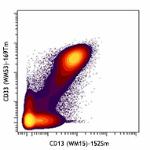
Human PBMCs stained with 152Sm anti-CD13 (WM15) and 169Tm an... -
PE/Dazzle™ 594 anti-human CD13
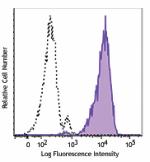
Human peripheral granulocytes were stained with CD13 (clone ... -
PE anti-human CD13

Typical results from human peripheral blood granulocytes sta... -
Brilliant Violet 711™ anti-human CD13
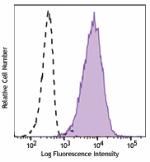
Human peripheral blood granulocytes stained with CD13 (clone... -
Ultra-LEAF™ Purified anti-human CD13
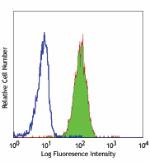
Human peripheral blood granulocytes stained with Ultra-LEAF™... -
Brilliant Violet 785™ anti-human CD13
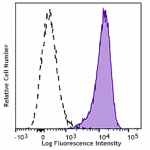
Human peripheral blood granulocytes were stained with CD13 (... -
Brilliant Violet 605™ anti-human CD13

Human peripheral blood granulocytes were stained with CD13 (... -
TotalSeq™-A0364 anti-human CD13
-
TotalSeq™-B0364 anti-human CD13
-
TotalSeq™-C0364 anti-human CD13
-
PE/Cyanine7 anti-human CD13

Typical results from human peripheral blood granulocytes sta... -
TotalSeq™-D0364 anti-human CD13
-
APC anti-human CD13
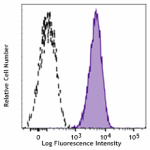
Typical results from human peripheral blood granulocytes sta... -
PE/Dazzle™ 594 anti-human CD13

Typical results from human peripheral blood granulocytes sta... -
PerCP/Cyanine5.5 anti-human CD13
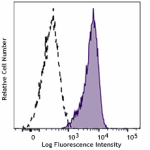
Typical results from human peripheral blood granulocytes sta... -
GMP APC anti-human CD13
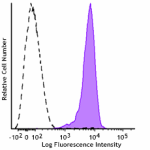
Typical results from human peripheral blood granulocytes sta... -
GMP PE anti-human CD13
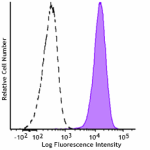
Typical results from human peripheral blood granulocytes sta... -
PE/Fire™ 810 anti-human CD13
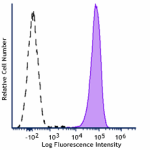
Human peripheral blood granulocytes were stained with anti-h... -
GMP PE/Cyanine7 anti-human CD13
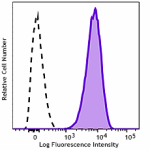
Typical results from human peripheral blood granulocytes sta... -
GMP PE/Dazzle™ 594 anti-human CD13
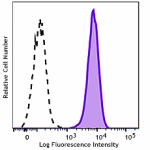
Typical results from human peripheral blood granulocytes sta... -
GMP PerCP/Cyanine5.5 anti-human CD13
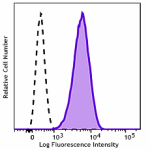
Typical results from human peripheral blood granulocytes sta...
 Login / Register
Login / Register 










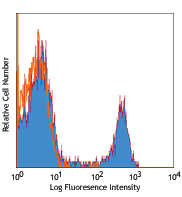
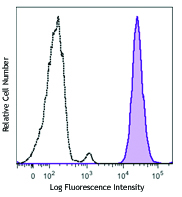
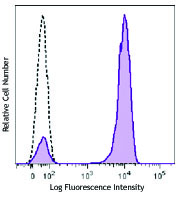




Follow Us